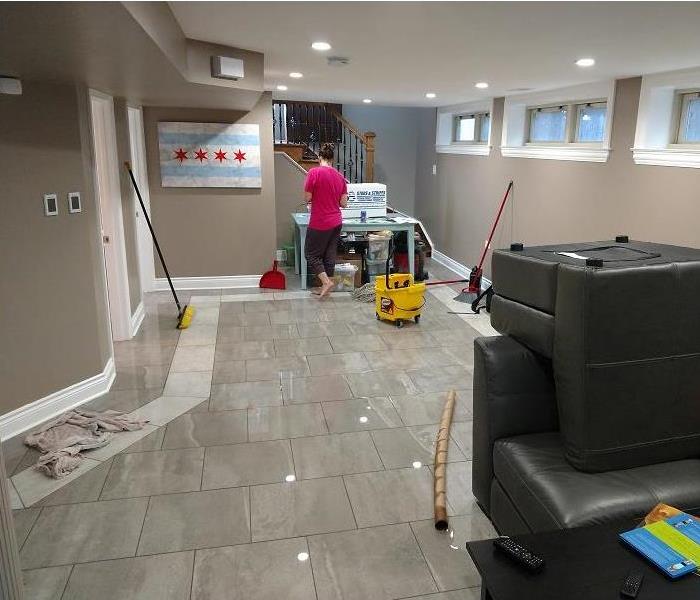The science of drying
3/23/2018 (Permalink)
There is a science to drying structure, called Psychrometrics. In a nutshell, it means that there are several factors to take into account when determining how to dry a structure, and just how much equipment would be needed to complete the process.
Some of the factors are:
- Amount of water needing to be extracted.
- In the affected area, is there an inch of water that needs to be removed, or several feet?
- Air temperature.
- Warm air does two things: it can hold more moisture than cool air, and it also helps the evaporation process. Both are essential in getting the moisture out of structure and into the air.
- Relative humidity.
- Outdoor relative humidity can have an adverse effect on the humidity inside the home.
- Air movement.
- Air movement aids the drying process, and gets the moisture up and into the air.
- Now that the moisture is in the air, dehumidifiers can collect that moisture and dispose of it properly.
- Area size.
- The size of the area that needs to be dried can vary the strategy. It’s much easier to dry a closet than it is to dry a gymnasium.
- Material type.
- Some things dry very quickly, while others cannot. Where drywall takes up to a couple of days to dry, a plastic tote will not. And what about insulation?
SERVPRO Bedford Park/Burbank are experts in not only drying out structure, but also help prevent mold from becoming an issue.
So, if you have suffered a water damage, fret not! Call the experts at SERVPRO Bedford Park/Burbank at 708-430-3600. We can come out and determine the best way to dry the damaged areas in your home.




 24/7 Emergency Service
24/7 Emergency Service
